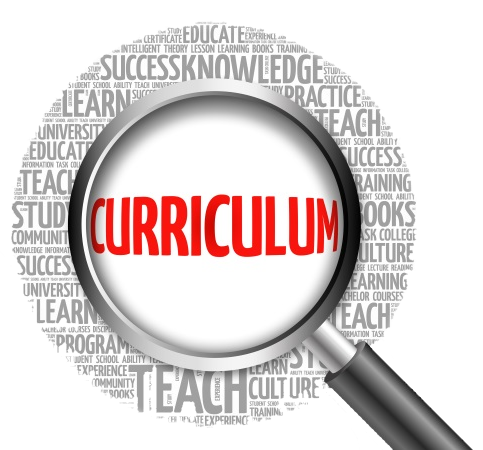Design and teach a course
| Ask us |
Tell us |
 |
 |
The overview of curriculum
Below, you'll see three lenses to look at curriculum. (Note that there may be differences in terminology between education systems and institutions, but the terms broadly mean the same thing.)
.
Intended Curriculum
This is the curriculum we plan for. It's what's meant to happen in the classroom. When we talk of 'alignment' - be it horizontal or vertical - we're talking in the first instance of the intended curriculum.

Enacted Curriculum
This is the curriculum that actually happens in the teaching space (virtual or face to face).
Of course, in a perfect world, 'intended' would be the same as 'actual', but this doesn't really happen very often. If a course has 20 tutors teaching into it, there will probably be 20 slightly different versions of enacted curriculum. There are lots of possible reasons for this ... tutors may interpret teaching points differently, or they may - for some reason - decide to teach something else, or the session objectives may be vague, or the tutor may need to adjust the curriculum for students who aren't ready, and on and on.
Just to be clear, this is not necessarily about tutors doing different things. It's quite possible for even different activities to result in the same curriculum or the same learning objectives. So it's not about the activity in isolation. It is about the purpose and learning that is meant to derive from the activity. Using the same logic it is quite possible the SAME activity will result in a different curriculum and different learning objectives. It's about the learning, not the teaching. (IMage to the right sourced from Shutterstock Photo Library, used through a UniSA subscription).
.
Hidden Curriculum
This is the most problematic of the three lenses. The hidden curriculum is what the student actually learns. This is not just about learning you can measure, but unintended learning as well.
For example, if lecturers ask students to do a reading, and they don't, and then there are no consequences, students learn not to bother with readings. If teachers say they're interested in student thinking, but then give students no opportunity to input, or don't appropriately acknowledge their input (over-riding their answers, for instance), they learn to just tell us what we want to hear.
One of the few ways we can find out about the hidden curriculum is through evaluation. Course Evaluation Instruments, for all their negatives, are a chance for us to learn about the hidden curriculum. However, it's better to actually learn about this before the end of the course through a CEI - formative ongoing evaluation is a better idea!